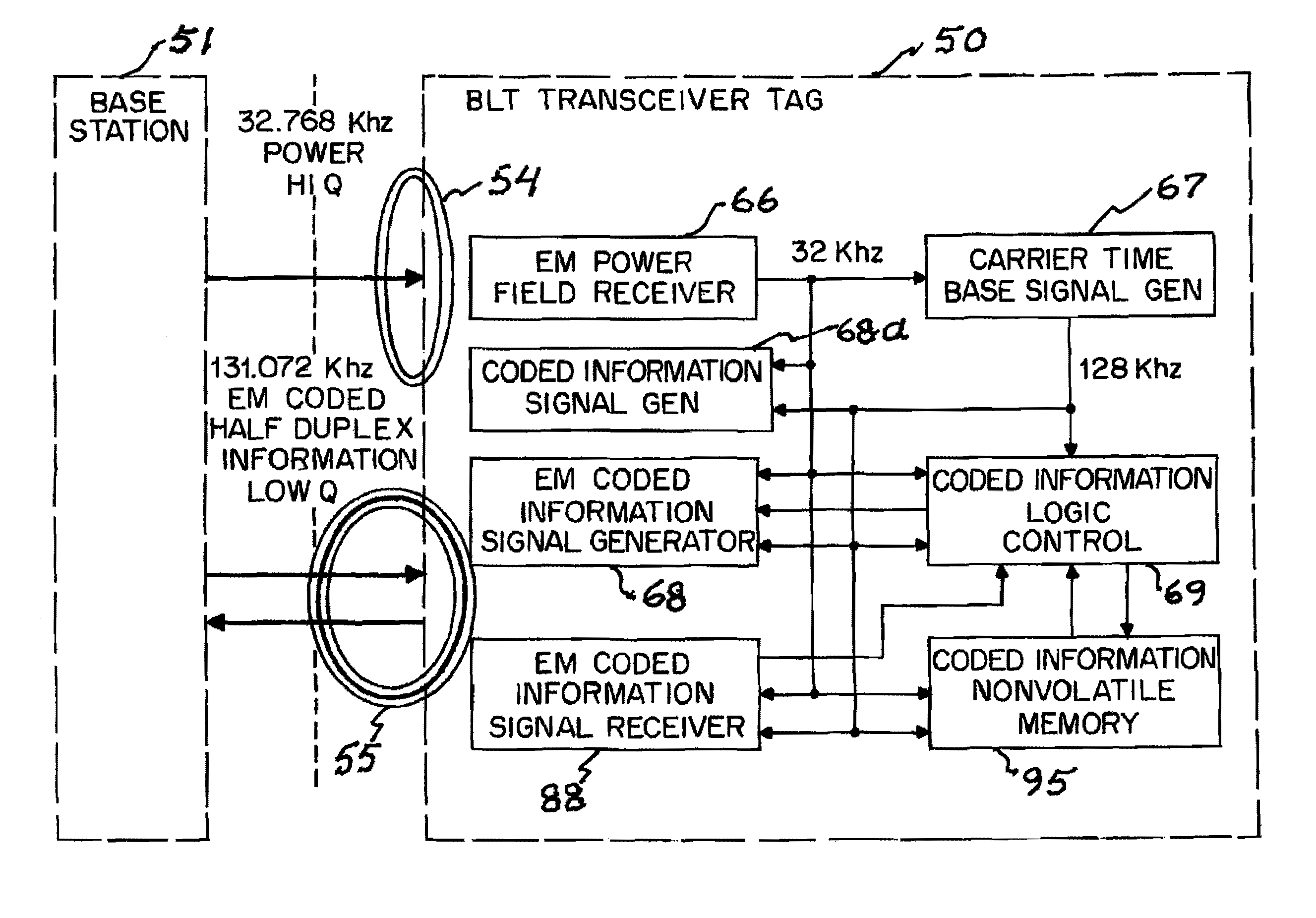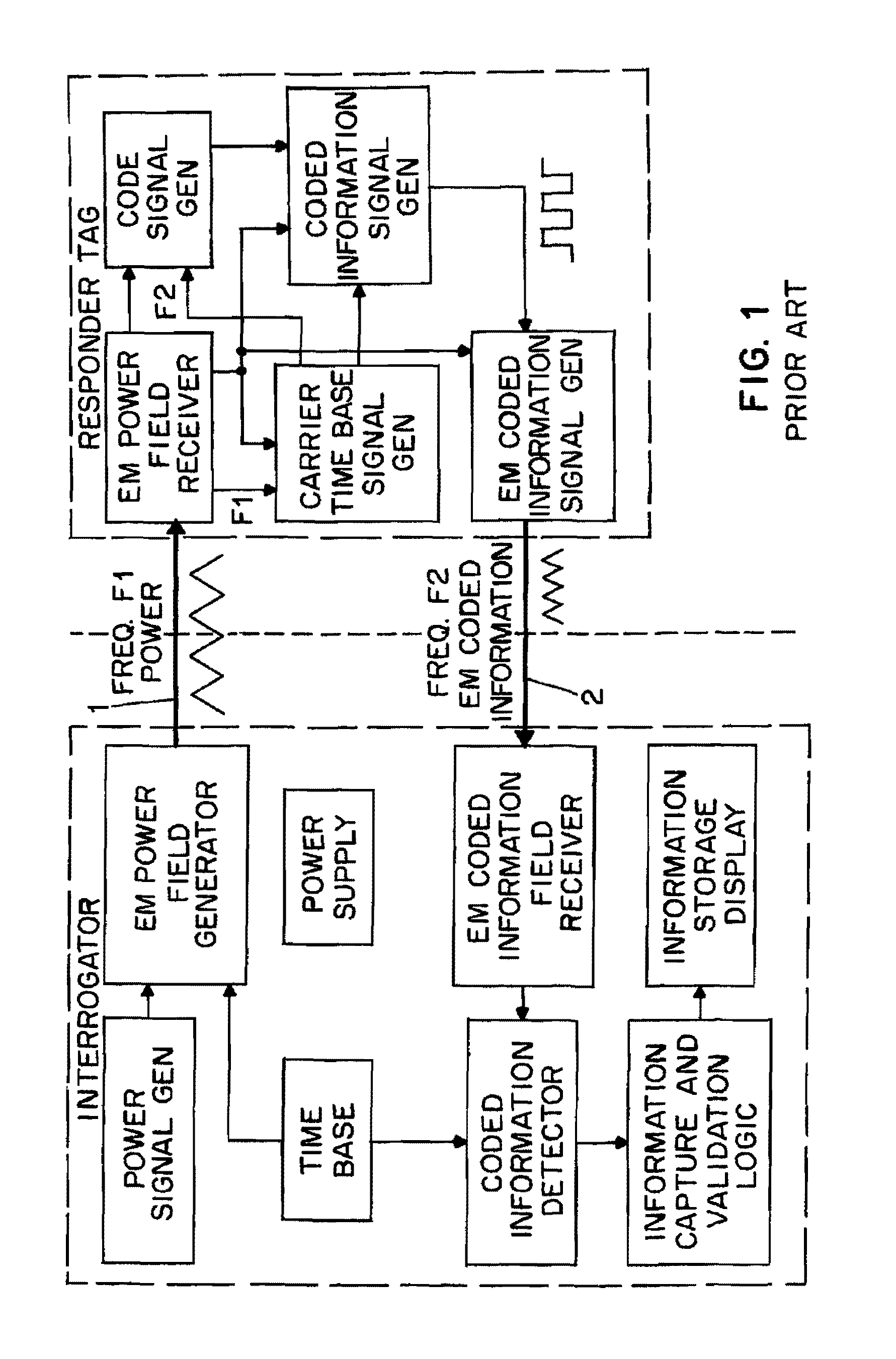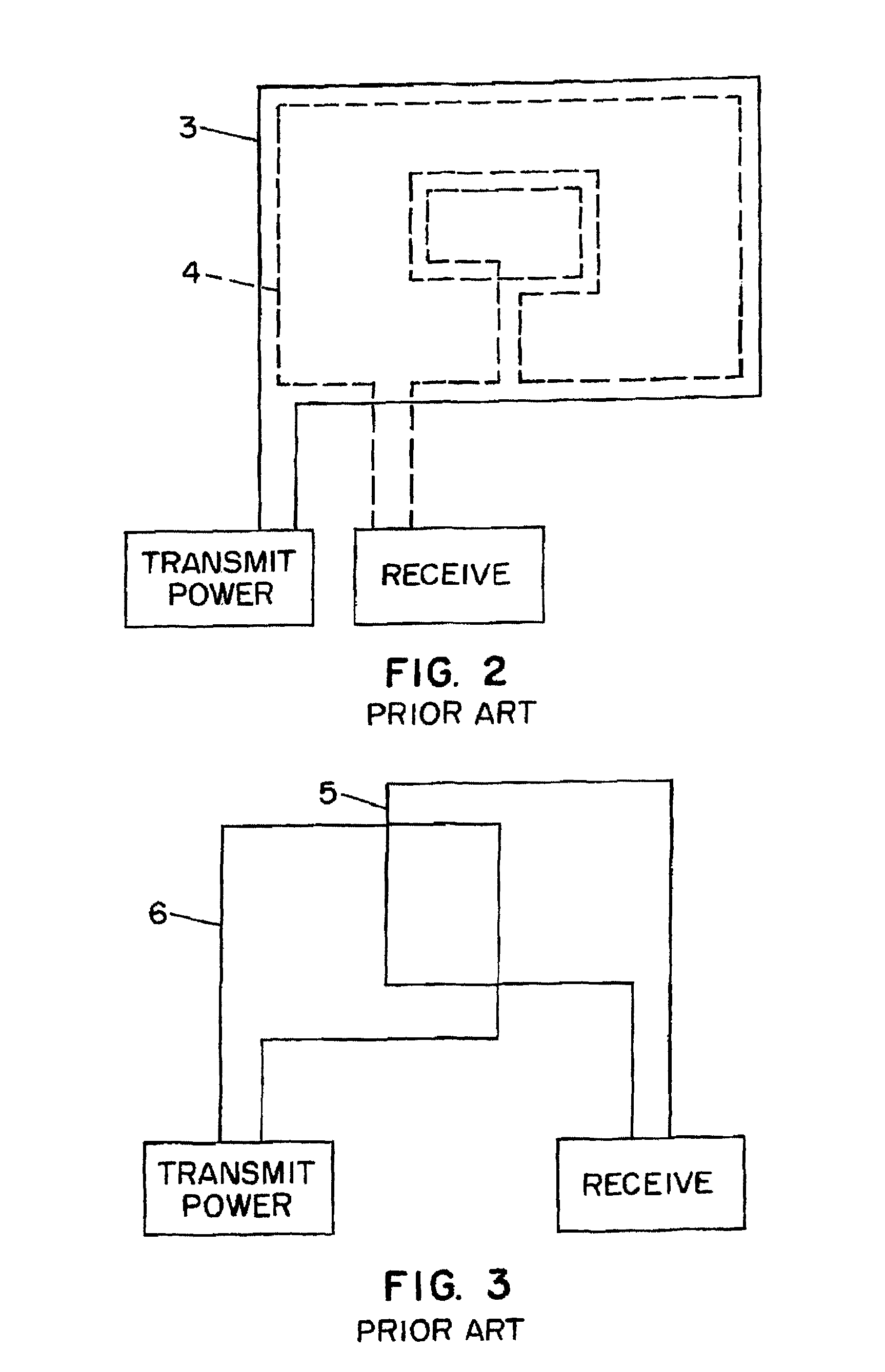Low frequency inductive tagging for lifecycle management
a technology of lifecycle management and low frequency inductive tagging, which is applied in the field of detecting and tracking of animate and inanimate objects, can solve the problems of insufficient information about the functional significance of the differences outlined above, the range of devices is limited to a few inches, and the terminology used in the published literature is not well defined and can be confusing. , to achieve the effect of reducing the electromagnetic coupling of two co-planar air-core coils, reducing the electro-magnetic coup
- Summary
- Abstract
- Description
- Claims
- Application Information
AI Technical Summary
Benefits of technology
Problems solved by technology
Method used
Image
Examples
first embodiment
[0329]According to FIG. 40a, the tag energy source 66a comprises an energy storage device, such as a battery.
second embodiment
[0330]According to FIG. 40b, the tag antenna is a tag communication antenna 55 which preferably comprises a first elongated ferrite core for enhanced data communications. In this embodiment, the aforesaid tag energy source 66a comprises a tag power antenna 54 (preferably comprising a second elongated ferrite core, oriented substantially orthogonally to the first elongated ferrite core) operable to pick up electric energy induced by an applied varying electric field, and an energy storage device 66 / 67 (such as a capacitor or chargeable battery) connected to receive charging energy from the tag power antenna 54. Preferably, the tag communication antenna 55 is tuned to maximize signal strength at a frequency f(com) that is distinct from (e.g., is an integer multiple of) the frequency f(power) to which the tag power antenna 54 is tuned. Neither f(com) nor f(power) should exceed 1.0 megahertz. For example, when f(power)=64 Hz, then f(com) could be 128 Hz. According to this embodiment, re...
PUM
 Login to View More
Login to View More Abstract
Description
Claims
Application Information
 Login to View More
Login to View More - R&D
- Intellectual Property
- Life Sciences
- Materials
- Tech Scout
- Unparalleled Data Quality
- Higher Quality Content
- 60% Fewer Hallucinations
Browse by: Latest US Patents, China's latest patents, Technical Efficacy Thesaurus, Application Domain, Technology Topic, Popular Technical Reports.
© 2025 PatSnap. All rights reserved.Legal|Privacy policy|Modern Slavery Act Transparency Statement|Sitemap|About US| Contact US: help@patsnap.com



